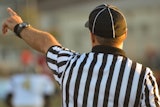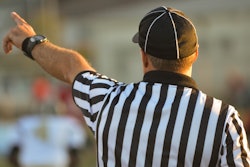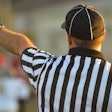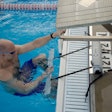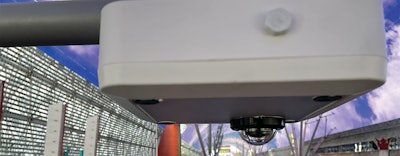
The terrifying videos posted online following a mass shooting event typically depict pure chaos, as people try to flee a bad actor armed to the teeth with lethal weaponry. They are depressingly common these days — both the shootings and the viral digital documentation. Gun violence has permeated nearly every public common, from places of worship to hospitals to schools to shopping malls, and sports venues are no exception.
While operators of sports facilities at all levels are tasked with providing patrons with an exciting and comfortable game-day experience, they’re also responsible for matters of life and death. To keep everyone in their venues safe, operators deploy a variety of tools and strategies — staff training, metal detectors, video surveillance systems — to mitigate the ominous threat that seems to be always lurking just off camera in the United States in recent years.
One of the tools that many venues are implementing to shorten response times to these types of incidents are gunshot detection systems, which aim to immediately identify the sound of a gunshot and locate the source of the threat. Here’s a look at how one company aims to quell the chaos should the unthinkable happen on a future game day.
How it works
Founded in 2006, Databuoy is named after the company’s early work with the United States Navy. The nautical term, Data Buoys, refers to a network of sensors moored in the ocean that support passing ships. Databuoy’s sensor networks are land-based, but are similarly “moored” to reliably persist, detect and serve passers-by. The company’s technology is founded on a series of research and development programs sponsored by the Defense Advanced Research Projects Agency (DARPA), for the Army and Navy, which sought to detect gunshots on the battlefield.
However, in 2013 Databuoy turned its focus to public safety with a commercial gunshot detection system that can be deployed indoors or outdoors, making it an ideal solution for sports venues that see large crowds of people congregating at entrances and within interior concourses.
COO Alex Chermak says his company actually sought to refine a system that could be deployed in both indoor and outdoor environments largely because a majority of school shootings begin outside the building, and immediate detection is the key to stopping the violence as quickly as possible.
The Databuoy system is built on an expansive acoustic library that has been collected on Databuoy’s sensor hardware with tens of thousands of rounds fired and millions of hours of sensor operations. When the system detects a loud sound, it references that sound against this acoustic library to ensure it is an actual gunshot. Outdoor sensors are usually spaced 40 to 60 yards apart and work in tandem with a camera system that can immediately capture footage after gunshot detection.
Biggest challenge
Chermak says Databuoy customers identify speed and localization as the biggest challenges when detecting gunshots. “So, where did it come from exactly and how fast can you get me that information?”
Databuoy currently has a system installed at Las Vegas’ Downtown Fremont Street, and the system has detected gunfire events at that location.
“What we’ve found at the Fremont location, and another in Annapolis, Md., is that the responders are getting the information that we provide in about 10 seconds,” Chermak says. “And what they’re getting is the location within 6 feet of where that shot came from. And if there’s video, they’re getting video three seconds before and after, so they can see what’s going on. They’re getting all of that in 10 seconds. The first 911 call isn’t processed for at least a minute, and that time saves lives — not only for those who could be shot, but for the person who has been shot.”
The whole process is automated and the alert is immediately sent directly to command centers, as well through cellphone texts to verified subscribers.
While detecting the first shot is important, collaboration with local law enforcement and security teams is equally so.
“Private security certainly is the buyer of this thing,” says Chermak, “but it's a joint effort between the security firm associated with whatever that venue is — whether it’s a casino, or entertainment venue, or sporting venue — and the police department so that everybody’s getting the right information and can respond appropriately.”














